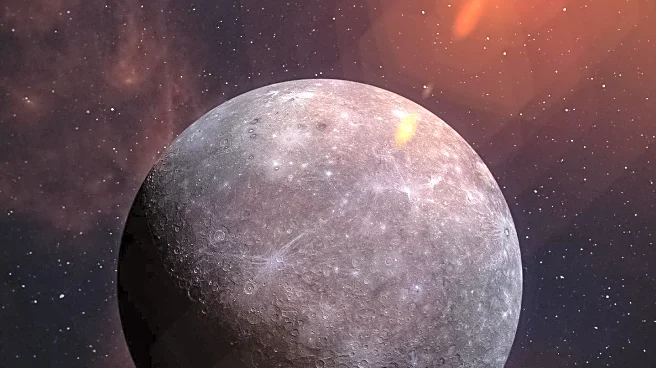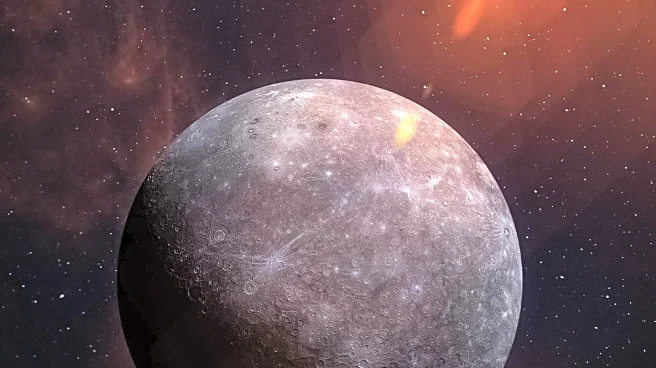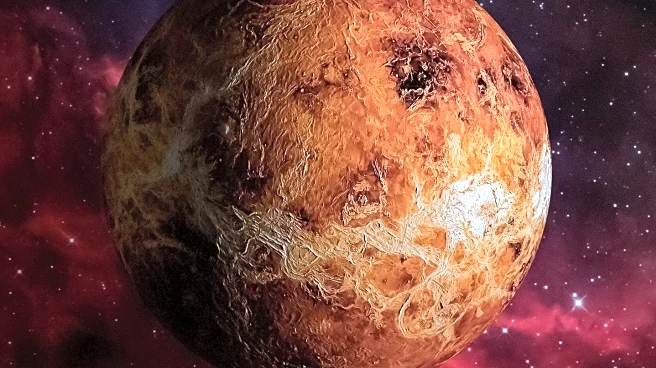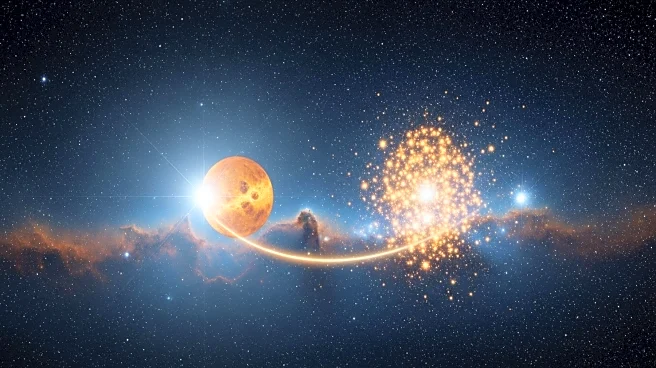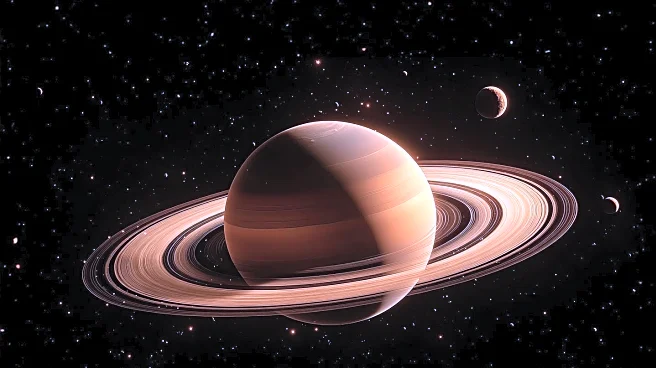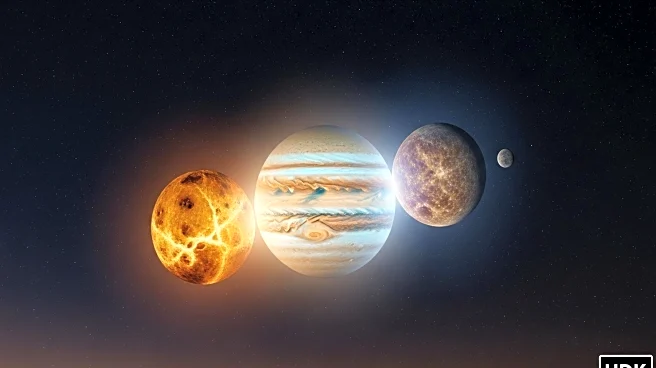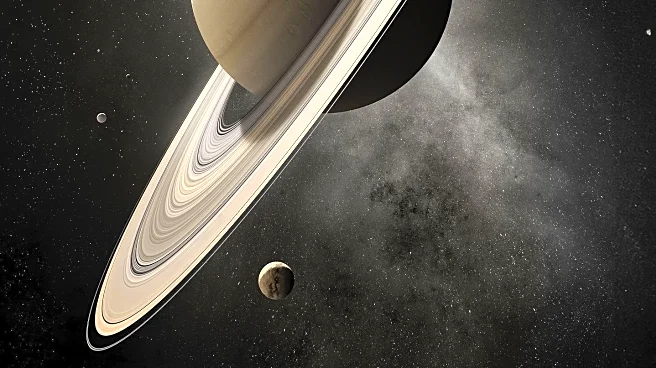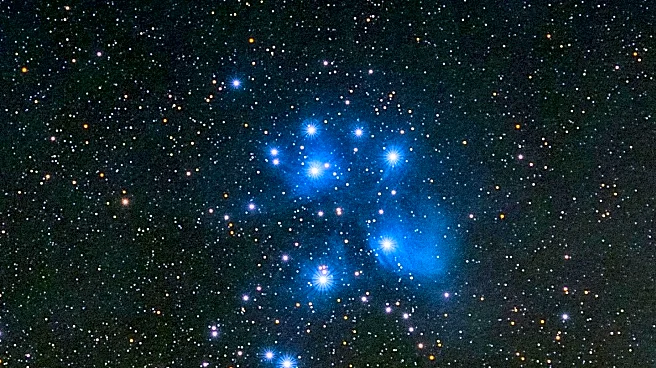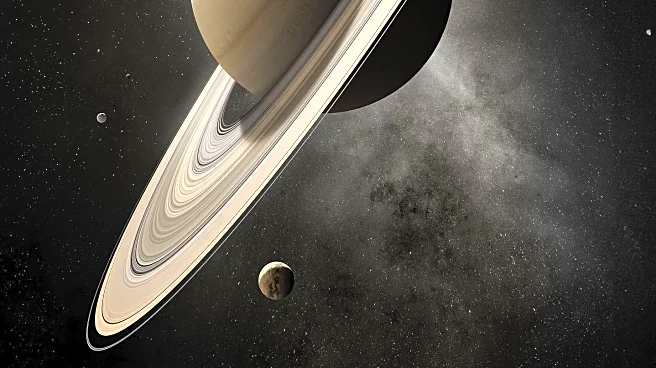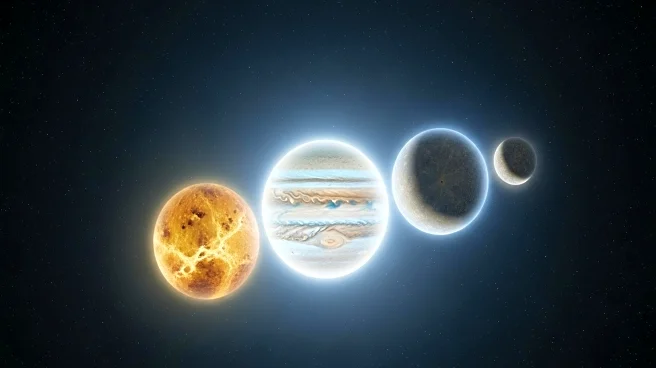What's Happening?
On September 2, 2025, the bright planet Mercury will pass the star Regulus in the constellation Leo just before sunrise. This celestial event will be visible in the eastern sky from locations with clear horizons. Mercury, with a magnitude of -1.3, will be positioned 1.2° north of Regulus, which has a magnitude of 1.4. Observers may need binoculars or telescopes to view Regulus due to its lower brightness compared to Mercury. The event occurs at 6 A.M. EDT, with Mercury reaching an altitude of 4° approximately 30 minutes before sunrise. Observers are advised to cease using optical instruments several minutes before sunrise to avoid damage from the sun's rays.
Why It's Important?
This astronomical event is significant for enthusiasts and researchers as it provides a rare opportunity to observe Mercury and Regulus in close proximity. Such events can enhance public interest in astronomy and provide educational opportunities for schools and amateur astronomers. Observing Mercury, which is often difficult due to its proximity to the sun, can offer insights into planetary motion and visibility conditions. The event also highlights the importance of clear skies and unobstructed horizons for successful observation, emphasizing the role of environmental conditions in astronomical studies.
What's Next?
Following this event, observers can look forward to other celestial occurrences throughout September, including Saturn and Neptune reaching opposition and Jupiter and Venus visible at dawn. These events offer further opportunities for observation and study, encouraging continued engagement with astronomical phenomena. Enthusiasts are encouraged to plan for these events by checking local conditions and preparing appropriate equipment for observation.
Beyond the Headlines
The event underscores the cultural and scientific significance of astronomy, fostering a sense of wonder and curiosity about the universe. It also highlights the importance of preserving dark skies and minimizing light pollution to ensure future generations can enjoy and study celestial events. The alignment of Mercury and Regulus serves as a reminder of the intricate dynamics of celestial bodies and their impact on human understanding of the cosmos.
